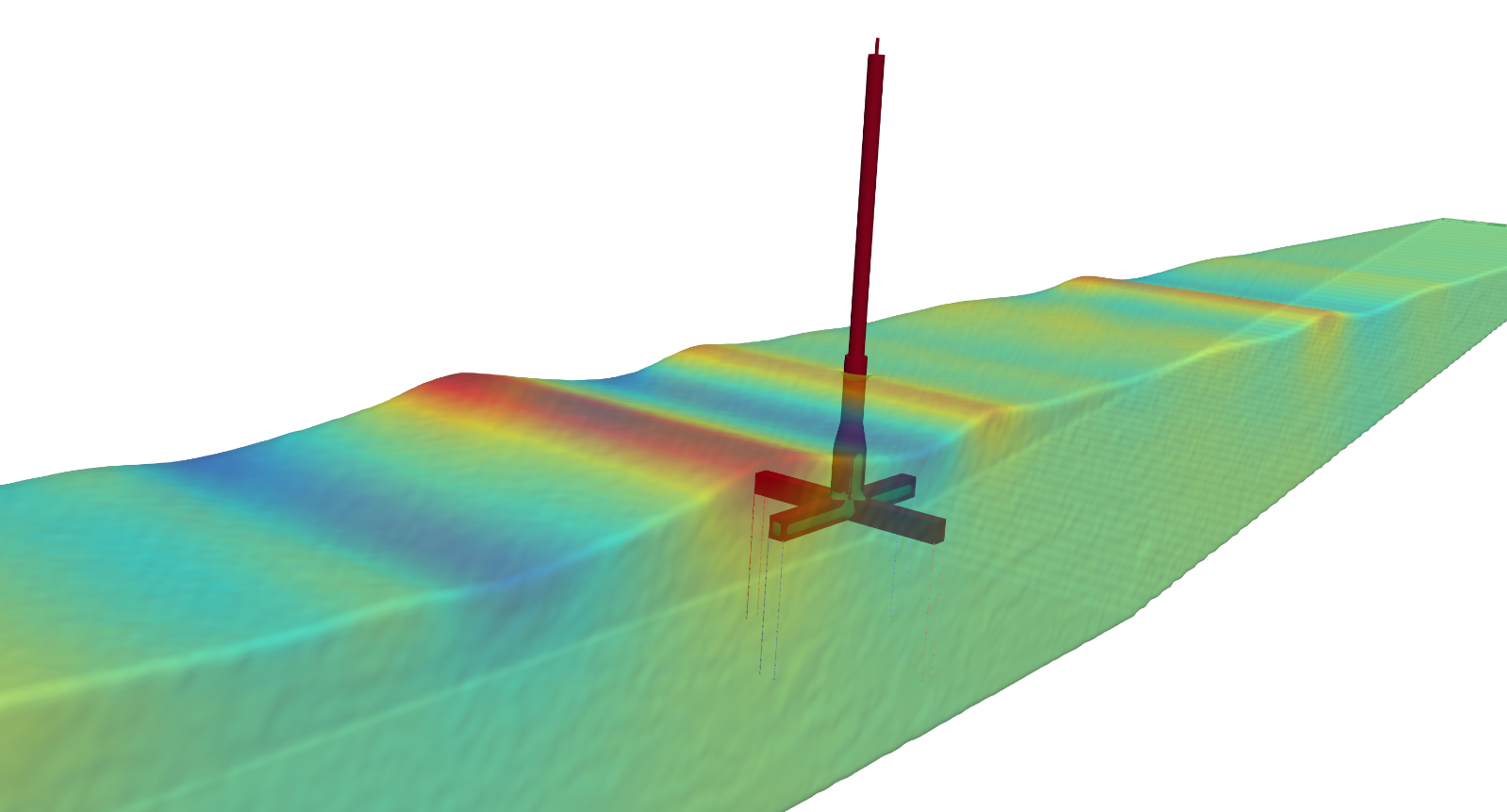Wind Turbine Modelling
Keeping wind turbines afloat
Researchers from the QUB Marine Research Group (MRG), School of Natural and Built Environment (SNBE), are using the power of supercomputing to model the performance of floating offshore wind turbines, estimating their extreme response to rough sea conditions.
Harnessing the power of wind is one of the key climate solutions for breaking our dependence on fossil fuels. Offshore wind turbines have several advantages over onshore including higher wind speed, greater consistency, and lack of interference from on-land human-made objects. There are two types of offshore wind turbines: namely, fixed and floating. Floating turbines are relatively new and seen by many as the future; simply put, they can be located in deeper water. The key to success is to ensure the stability of the floating platform considering the wave and wind loading.
This is where model performance is key to accounting for complicated fluid-structure interactions when wave loading and nonlinearities should be fully considered. Research at QUB is looking at different types of floating platforms such as spar, tension-leg, and semi-submersible platforms, for which the hydrodynamic coupling effects are prominent.

Modeling was performed on the Kelvin2 supercomputer GPUs. Computationally this is a large job, taking 30 days to run on 4 GPUs. Traditional CFD methods are mesh-based or particle-based. The research carried out on Kelvin2 used a Smoothed Particle Hydrodynamics (SPH) method as implemented in the open-source DualSPHysics code and it generally requires more resources in comparison to mesh-based approaches for simulating similar geometric representations. However, the advantages of efficiencies, robustness, and accuracies gained justify its use over other methods.
The direct comparison to the experimental data proves that a proper numerical configuration returns good agreement within the simulated spectrum of wave frequencies; the model can capture the self-increasing surge and pitch displacement trends when the input forces show period features close to the structure fundamental period.
The next stage of the project will be to further develop the method to consider the elasticity of the platform and further analyze the structural responses.
For further information:
Dr. Madjid Karimirad (PI): https://pure.qub.ac.uk/en/persons/madjid-karimirad
Bonaventura Tagliafierro (Postgrad): btagliafierro@gmail.com
DualSPHysics: https://dual.sphysics.org/
Linked Publications :
- Bonaventura Tagliafierro, Madjid Karimirad, Ivan Martinez Estevez, José M. Domínguez, Giacomo Viccione, Alejandro J.C. Crespo, “Numerical assessment of a Tension-leg platform wind turbine in intermediate water using the Smoothed Particle Hydrodynamics method”, MDPI, Energies, Published: 28 May 2022, Energies 2022, 15(11), 3993; https://www.mdpi.com/1996-1073/15/11/3993
- Bonaventura Tagliafierro, Madjid Karimirad, Ivan Martinez Estevez, Jose M. Dominguez, Alejandro J.C. Crespo, Moncho Gomez-Gesteira, Giacomo Viccione, “Preliminary Study of Floating Offshore Wind Turbines Motions Using the Smoothed Particle Hydrodynamics Method”, Proceedings of the ASME 2022 41th International Conference on Ocean, Offshore and Arctic Engineering, OMAE2022, June 5 – June 10, 2022, Hamburg, Germany, OMAE2022-78419, The American Society of Mechanical Engineers (ASME) https://omae.secure-platform.com/a/solicitations/165/sessiongallery/9845/application/78419
